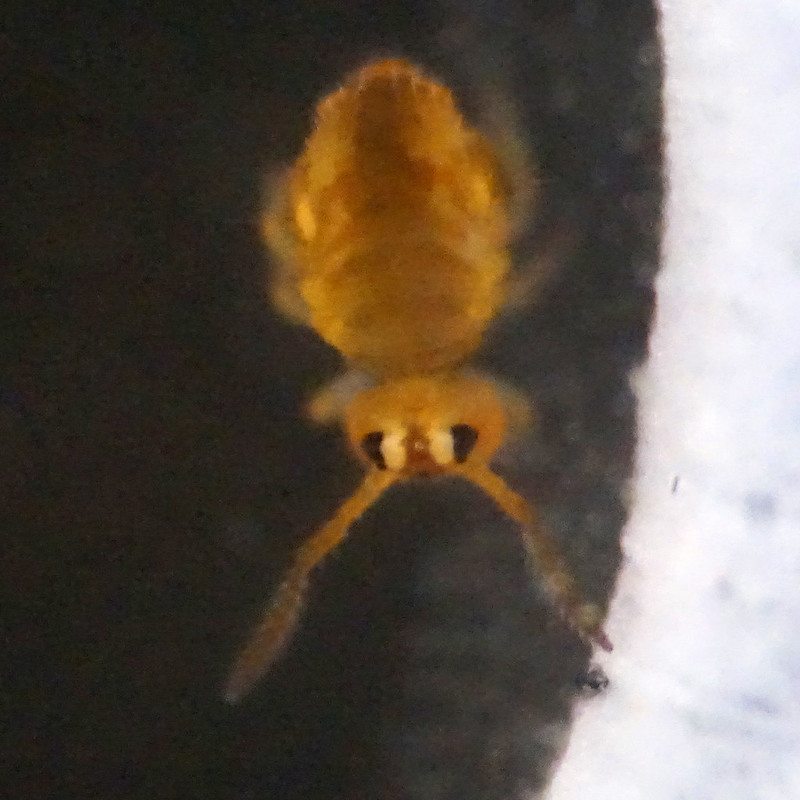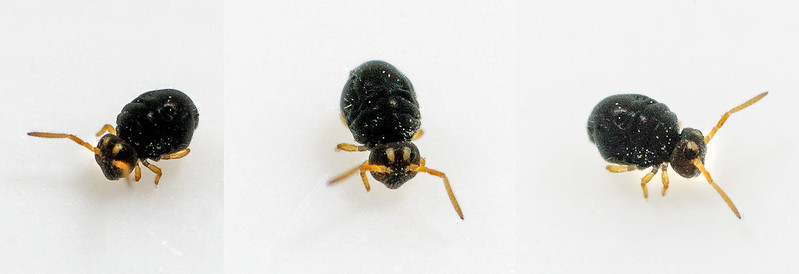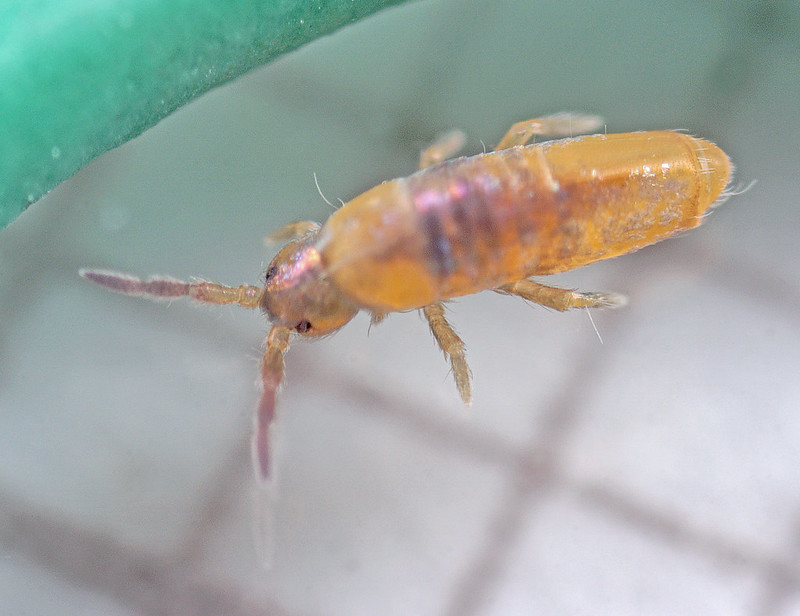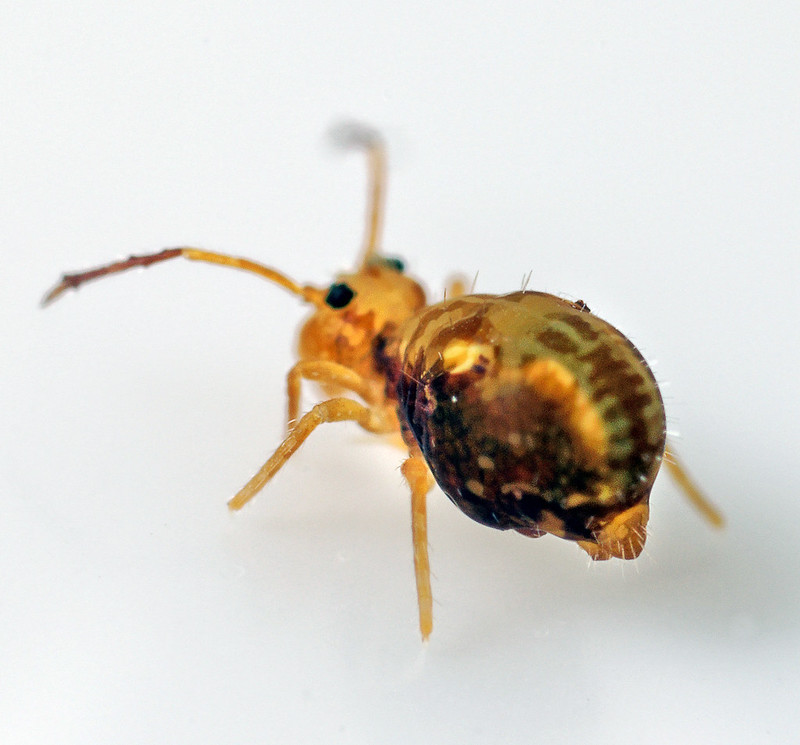Family Katiannidae
Genus Katianna:
www.collembola.org - Katianna
To the best of my knowledge there have been four "species" of
Katiannidae recorded in the UK. All seem to be associated with the horticultural industry and to have been imported from Australasia:
Katianna (nr) australis (Photo: Mark Horton):
 Katianna (nr) schoetti
Katianna (nr) schoetti (Photo: Edward Nurcombe):
 Katiannidae
Katiannidae genus nov.1 sp. nov. (with striped back):
 Katiannidae
Katiannidae genus nov.1 sp. nov.2 (with orange/red back):
 Genus Sminthurinus
Genus Sminthurinus:
www.collembola.org - Sminthurinus
This is a very difficult group with nearly 100 described "species". Badly needs a thorough taxonomic revision.
Sminthurinus aureus is a very common terrestrial springtail, less than 1mm long. It is particularly abundant on the underside of fallen leaves in autumn (as are other globular species). As the names suggests, it has an overall golden colour with no clear banding.
Sminthurinus aureus has the 'small abdomen' (the animal's "tail end") wholly fused, while other UK
Sminthurinus have a visible division between segments 5 and 6. The fourth antennal segment (ant4) is not subdivided.

Female:

 S. aureus
S. aureus comes in a variety of colour forms with varying degrees of dark pigment, e.g. form ochropus:

The entire
Sminthurinus aureus group badly needs a taxonomic revision. A good example of this is
Sminthurinus reticulatus. Although very similar to
S. aureus,
S. reticulatus is distinctively patterned with 3-4 transverse bands on the dorsal abdomen plus dark lateral bands which are discontinuous around the posterior end of the abdomen:

However, there is some confusion about the "true"
Sminthurinus reticulatus (which DNA evidence supports as a separate species), and
Sminthurinus aureus form reticulatus. The differences are said to be:
Sminthurinus reticulatus: transverse abdominal bands are the same dark colour as the lateral bands.
Sminthurinus aureus form reticulatus: transverse abdominal bands are paler than the lateral bands.
There are also reports about differences in the arrangement of the ocelli on the eyespot:
Sminthurinus aureus group (including form reticulatus): Ocelli C and D are distinctly smaller than the others (ABcdEFGH):
 Sminthurinus reticulatus
Sminthurinus reticulatus: Ocellus C is absent (ABdEFGH):

I have not yet been able to confirm this by observations.
Sminthurinus elegans form ornatus
Small (to 1mm) golden springtail with characteristic patter of four dark longitudinal bands on the abdomen - in this form the typical midstripe of S. elegans is lacking. Found in leaf litter and low vegetation in almost all terrestrial habitats, preferring drier areas than S. aureus.

Sminthurus viridis is a relatively large greenish or yellowish brown springtail reaching 3mm in length. The fourth antennal segment (ant4) is divided into 18 subsegments:

There are two variants of this species.
Sminthurus viridis ssp. cinereoviridis has two spots on small abdomen:

In the ecovariant
nigromaculatus of
S. viridis, three spots are present:
https://www.collembola.org/images/stach/1956/Sminthurus-viridis-1956-J-Stach-Poland-PlateXXXII-Fig3.jpg There are supposedly difference in chaetotaxy of the setae on the subcoxa of the third leg, but I have found it impossible to image these. Steve Hopkins was reluctant to accept
nigromaculatus as a separate species. As a dyed-in-the-wool taxonomic lumper, I wouldn't disagree. Frans Janssens calls it "
Sminthurus viridis ecovariant
nigromaculatus", which is said to be associated with sandy areas, heathland, moors, heather, etc.































